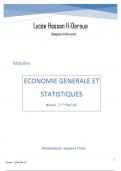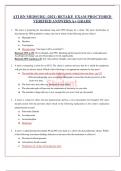Summary
Samenvatting Identificatietechnieken Farmaceutische Wetenschappen jaar 1
- Module
- Institution
Samenvatting van het vak Identificatietechnieken van de studie Farmaceutische wetenschappen. Deze samenvatting bevat uitgebreide informatie van alle behandelde technieken.
[Show more]












